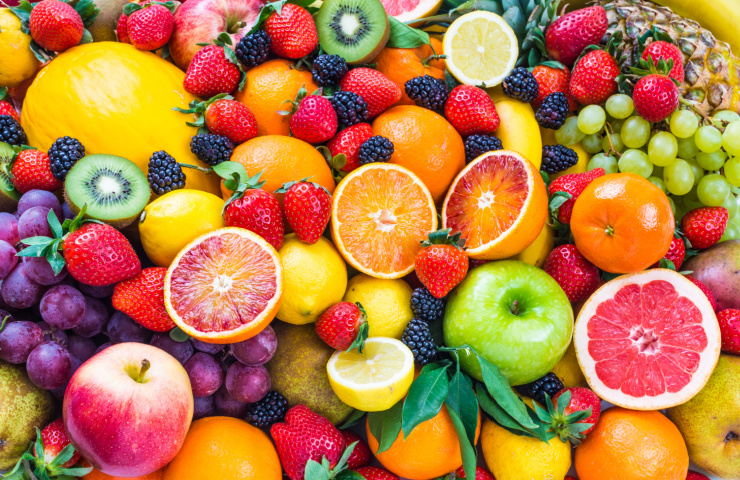On Mercola.com, Dr. Joseph Merocla reminds readers that in 2018 the “Dirty Dozen” fruits and vegetables were topped by one specific fruit and that since then, that fruit has remained at the top of the list for most pesticide residue remaining after harvest. That fruit was strawberries—the dirtiest of the Dirty Dozen. Mercola writes:
Editor’s Note: This article is a reprint. It was originally published April 24, 2018. An updated 2023 Dirty Dozen list has been added for comparison.
Fresh produce, whether organic or conventionally grown, is one of the healthiest food choices you can make. Organic produce gains an edge, however, because it tends to be more nutritious, tastes better and, importantly, does not contain pesticide residues like conventional produce does. In fact, the No. 1 reason people go organic is to avoid pesticides and other chemicals,1 and the majority of Americans consume organic food at least occasionally.2
If your budget prevents you from buying organic food 100% of the time — or there’s not an adequate selection in your area — it’s useful to know which foods to prioritize over others. Namely, which conventional foods are the most contaminated and therefore the most important to buy organic?
Every year, the Environmental Working Group (EWG) releases their “Dirty Dozen” list for produce, which are among the most heavily contaminated with pesticides. For 2018, you’ll see a familiar fruit earned the dubious top spot for the third year in a row: strawberries. In 2023, the list hasn’t changed much. Various foods have exchanged spots on the list, but strawberries remain at the top.3
Nearly 70% of Conventional Produce Contains Pesticide Residue
EWG analyzed tests from the U.S. Department of Agriculture (USDA), which revealed close to 70% of conventionally grown produce samples contained pesticide residues. In all, 230 different pesticides and pesticide breakdown products were identified in more than 38,800 nonorganic samples.
While the Alliance for Food and Farming, a trade association that represents large produce growers and suppliers of pesticides and fertilizers,4 was quick to point out that 99% of pesticide residues on fruits and vegetables were below the safety levels set by the U.S. Environmental Protection Agency (EPA),5 a report commissioned by the European Parliament found negative health effects may occur in children even at current levels of exposure.6,7
Part of the problem is that pesticide “safety” limits were based on animal studies looking at the effect of one pesticide at a time, but in the real world people are exposed to multiple pesticide (and other chemical) residues simultaneously. According to EWG senior analyst Sonya Lunder:8
“The EPA’s tolerance levels are too lenient to protect public health. They are a yardstick to help the agency’s personnel determine whether farmers are applying pesticides properly. The levels were set years ago and do not account for newer research showing that toxic chemicals can be harmful at very small doses, particularly when people are exposed to combinations of chemicals.
If pesticide tolerance levels were set to protect the health of children, who are more vulnerable than adults to small doses, more fruits and vegetables would fail EPA standards. The current EPA pesticide tolerances are like having a 500 mph speed limit — if the rules of the road are so loose it’s impossible to violate them, no one can feel safe.”
In research published in JAMA Internal Medicine, for instance, it was found that greater intake of fruits and vegetables with high pesticide residues was associated with a lower probability of pregnancy among women undergoing infertility treatment.9
Specifically, consuming two or more servings of high-pesticide residue produce daily was linked to a 26% lower chance of pregnancy compared to those who ate fewer servings. Consuming fruits and vegetables with high pesticide residues has also been linked to lower semen quality in men. According to the study, published in Human Reproduction:10
“On average, men in highest quartile of high pesticide residue fruit and vegetable intake (≥1.5 servings/day) had 49 percent … lower total sperm count and 32 percent … lower percentage of morphologically normal sperm than men in the lowest quartile of intake (<0.5 servings/day) … Low-to-moderate pesticide residue fruit and vegetable intake was associated with a higher percentage of morphologically normal sperm.”
Strawberries Top the Dirty Dozen Produce List
As was also the case in 2016 and 2017, strawberries ranked No. 1 in terms of pesticide residues in 2018, with up to 22 different pesticides found on a single berry. Nearly all of the strawberry samples (99%) contained at least one detectable pesticide residue, while 20% contained 10 or more. Residues of 81 different pesticides were detected in various combinations on the strawberry samples tested, EWG noted, with an average of 7.8 per sample.11
For comparison, other produce contained an average of 2.1 pesticides per sample. Not only are strawberries among the most heavily sprayed crops, with close to 300 pounds of pesticides applied to each acre of California-grown strawberries,12 but nerve gases are also used to kill pests and weeds on the soil prior to planting. Some of the most concerning chemicals used on strawberries include:
- Carbendazim, a hormone-disrupting fungicide that’s banned in the European Union (found on 16% of the samples)
- Bifenthrin, an insecticide designated a possible human carcinogen by California regulators and the EPA (found on more than 29% of the samples)
As mentioned, toxic fumigants are also used to sterilize the soil prior to planting. While tarps are used to keep the gases underground, sometimes the gases (which include chloropicrin, the active ingredient in tear gas, and 1,3-dichloropropene, a carcinogen) leak out, polluting the air and putting farmers and nearby residents at risk.
Organic alternatives exist, including crop rotation, which cuts down on pests, and anaerobic soil disinfestation (ASD), which involves combining rice bran or molasses with topsoil, adding water and covering the land with a tarp to kill pathogens.13
Read more here.
If you’re willing to fight for Main Street America, click here to sign up for my free weekly email.






